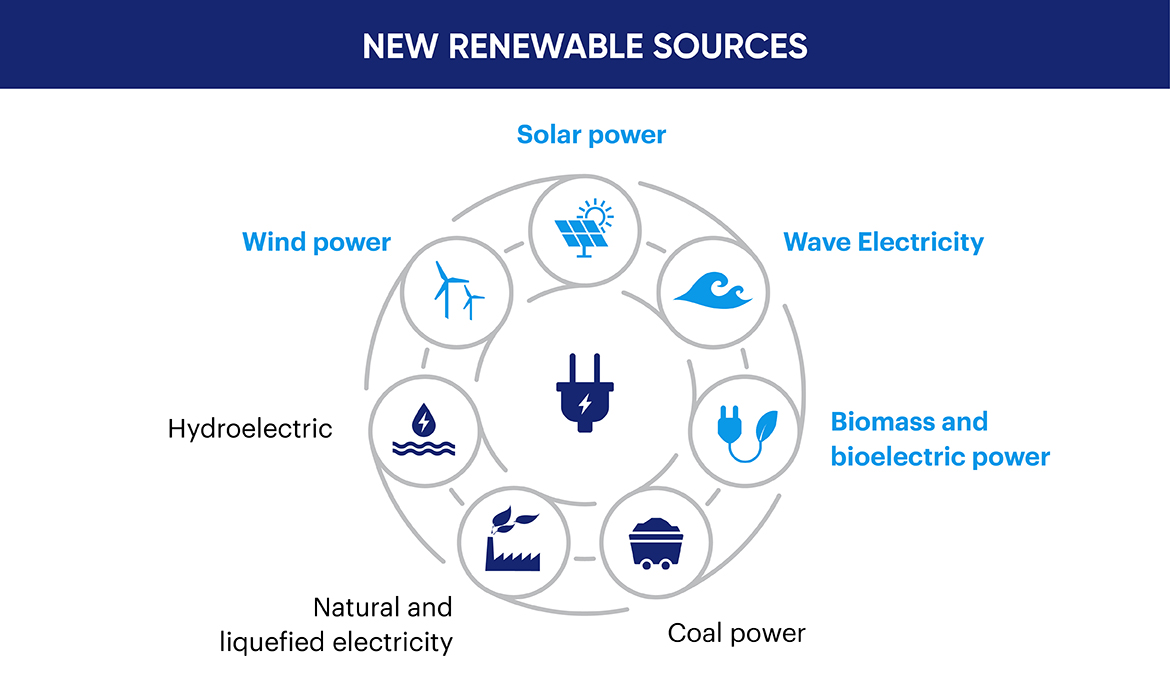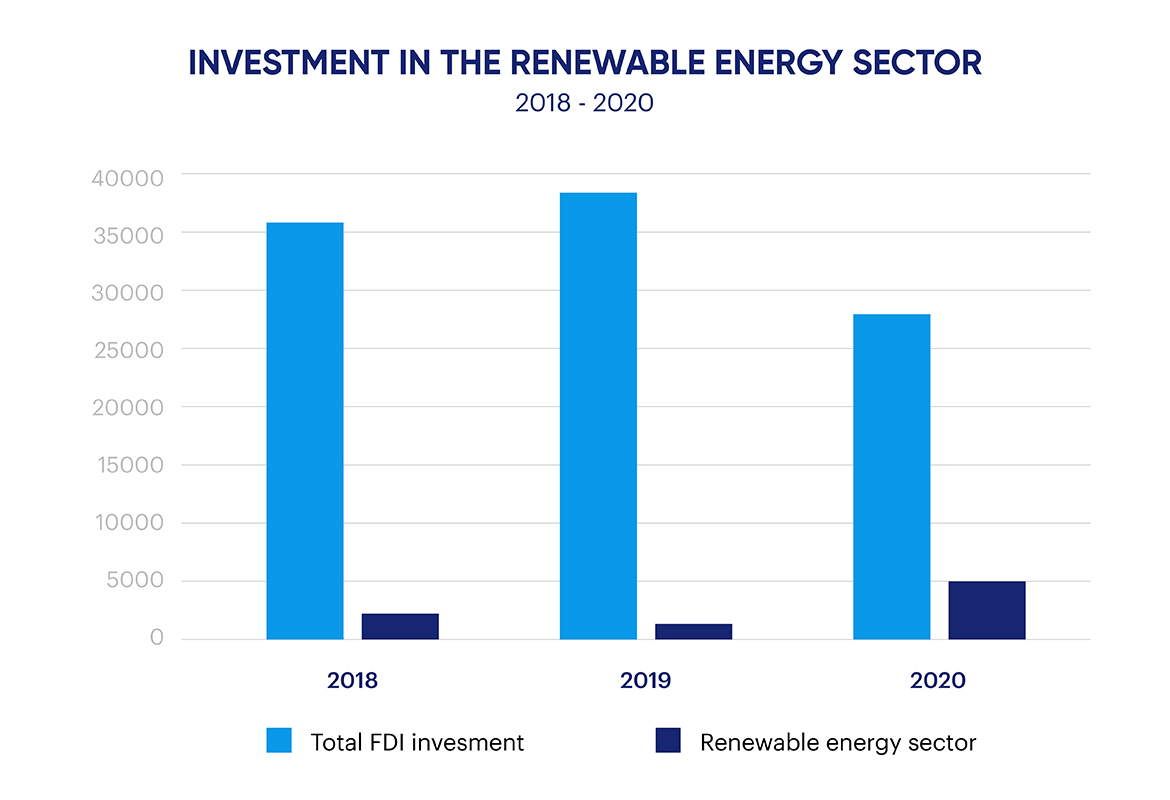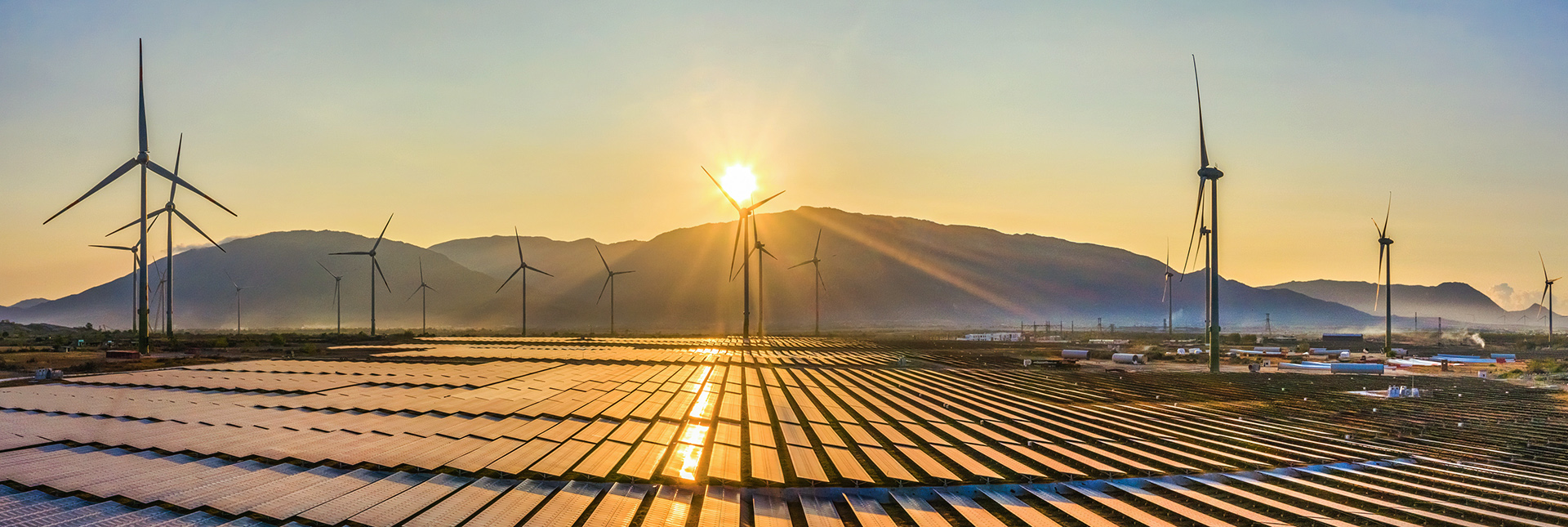Vietnam is one of the Southeast Asian countries with rapid GDP growth, from 6.5-7% annually, leading to an average increase in energy demand of 11% per year. This scenario creates many new opportunities in the energy sector, especially renewable energy to ensure sustainable development in the future.
According to the National Electricity Development Plan, Vietnam needs to achieve a renewable energy ratio of 15-20% by 2030 and 20-30% by 2045 (1). Currently in Vietnam, coal and hydroelectric power are the two main sources of energy because of stable power sources and suitable prices. The demand for electricity is increasing; while limited in reserves and ability to exploit domestic energy sources such as coal, oil, and gas; This means that we still have to import coal, gas and oil and electricity products from neighboring countries such as Laos, China and Cambodia. Over-reliance on fossil energy sources will not ensure sustainable energy security in the future as resources will deplete. At the same time, the environment and human health will also be affected by the process of mining and using these mineral resources. Therefore, the shift to investment in renewable energy, based on many geographical and natural advantages, will help Vietnam be more proactive in ensuring energy sources for economic development.
The potential for the development of the renewable energy sector
The development of renewable energy sources is an inevitable trend in the world today. The global energy sector tends to shift positively with “green energy” sources. Vietnam is also on the list of countries with great potential to invest in new renewable energy sources such as solar, wind power, biomass electricity, dual-sea electricity and Biogas in addition to available energy sources such as Liquefied Natural Gas, Hydroelectricity and coal power.

- Favorable geographical location. Vietnam has a coastline of more than 3260 km, with an average wind speed of 7 m/s (2). The Central Highlands, Southern and South Central provinces have an average high solar radiation of 1,387-1,534 Kwh/KWp per year. This is a natural advantage that creates a great attraction in terms of investment in wind and solar power in these provinces. In addition to the advantages of wind and solar radiation, with a large forest area, in Ca Mau alone, the amount of exploitation and wood preparations reaching about 225,000-300,000 tons per year is also a great potential for biomass power development (3).
- The sector is of interest to investors. In recent years, renewable energy has been one of the most priority areas for investment in Vietnam. It is estimated that by 2030, Vietnam will need $12 billion to invest in new electricity sources. In 2021, Vietnam ranked 31st in the list of countries with high attraction for investment and deployment opportunities in the renewable energy sector (4). At the same time, along with the policy of encouraging renewable energy, in the past 3 years, wind and solar power projects have developed very strongly in the central and southern coastal provinces. Total FDI investment in the electricity production and distribution sector was over US$5.1 billion in 2020, four times higher than the previous year (5).

- The cost of installation is decreasing. The cost of generating regulated electricity (LCOE) for solar power in Vietnam has decreased by 106% in the last four years. It is expected that by 2022, investment in onshore wind power will be cheaper than investing in new coal-fired power plants (6). In addition, Vietnam also has strengths in manufacturing and has factories specializing in producing photovoltaic panels. At the same time, own solid transmission infrastructure and networks.
Towards a more diverse energy system
Taking advantage of the existing potential, a diversified energy system with energy production technologies and reserve battery will be the option with optimal cost, suitable for Vietnam and bring many benefits such as:
- Reduce dependence on coal, oil and gas sources. Help to be more proactive in price coordination and minimize risks from external market impacts.
- Exploiting the potential of many provinces spread throughout Vietnam, especially the South Central Coast with sunshine and wind up to 300 days per year. Currently, we have projects that are in the early stages and achieved positive results of solar power in Ninh Thuan, Binh Thuan, Phu Yen, along with coastal wind power projects in Bac Lieu, Soc Trang, Tra Vinh, Can Gio.

- Contribute to the economic development of provinces that invest in this new energy source. That is when new investment will impact the development of construction industry, trade, services and real estate market, effectively exploit the wasteland and dry land fund and contribute to the development of rural transport infrastructure. In addition, the renewable energy sector will create many new jobs with above-average incomes. In Ninh Thuan province alone, there have been more than 17,380 new jobs created (7).
- Minimize the impact on the environment. Renewable energy production will help reduce greenhouse gas emissions by 32% (8), reduce air pollution and related costs. The development of clean energy sources will help reduce the pressure of the thermal power sector on environmental issues during the treatment of polluting coal and water scarcity, affecting the characteristics of hydrogeology in the mining area.

The potential of the renewable energy sector is gradually becoming a mainstream trend and receiving a lot of attention in Vietnam. The development of renewable energy is essential to ensure energy security, contribute to economic development in provinces, protect the environment, and respond to climate change.
To reach its full potential, Vietnam will need policies to expand its renewable energy market, promote and deploy new technologies, provide appropriate opportunities and encourage the use of renewable energy in all important areas. With the support of specific policies, renewable energy projects will have many facilities to develop and attract investors, promote technology transfer to domestic enterprises, help these enterprises be able to compete in the international market.
Reference sources:
(1) Ministry of Industry and Trade. 2020. Proposing solutions for renewable energy development
(2) Globalwindatlas. Info area Vietnam
(3) The S&T. 2021. Attracting investment in renewable energy development in the Mekong Delta
(4) EY. 2019. Renewable Energy Country Attractiveness Index (RECAI)
(5) The S&T. 2020. FDI attraction in 2020 reached 28.53 billion USD
(6) Carbon tracker. 2018. Economic and financial risks of coal power in Indonesia, Vietnam and the Philippines
(7) VGP news. 2021. Building Ninh Thuan into a core area for renewable energy development
(8) VBF. 2019. Energy Production Plan in Vietnam





